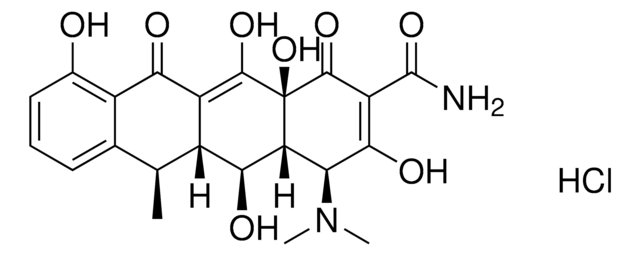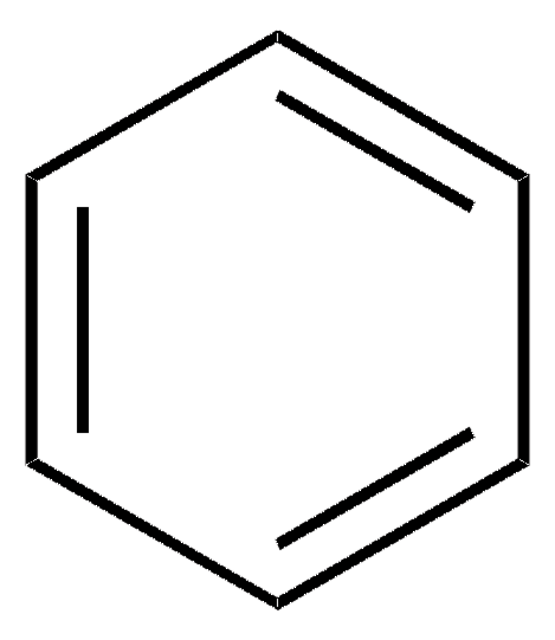D3072
Doxycycline Hydrochloride, Ready Made Solution
Synonym(s):
α-6-Deoxy-5-hydroxytetracycline hydrochloride, 2-Naphthacenecarboxamide, 4-(dimethylamino)- 1,4,4a,5,5a,6,11,12a-octahydro-3,5,10,12,12a-pentahydroxy-6-methyl-1,11-dioxo-, hydrochloride (1:1), (4S,4aR,5S,5aR,6R,12aS)-, Doxylin, Idocyklin, Vibramycin hyclate, Vibramycin hydrochloride
About This Item
Recommended Products
biological source
synthetic
Quality Level
sterility
0.22 μm filtered
form
liquid
concentration
100 mg/mL in DMSO
solubility
DMSO: 100 mg/mL
antibiotic activity spectrum
Gram-negative bacteria
Gram-positive bacteria
mycoplasma
parasites
Mode of action
protein synthesis | interferes
storage temp.
−20°C
InChI
1S/C22H24N2O8.ClH/c1-7-8-5-4-6-9(25)11(8)16(26)12-10(7)17(27)14-15(24(2)3)18(28)13(21(23)31)20(30)22(14,32)19(12)29;/h4-7,10,14-15,17,25-27,31-32H,23H2,1-3H3;1H/b21-13-;/t7-,10+,14+,15-,17-,22-;/m0./s1
InChI key
VLUQVUWDECWBTL-UQVCFKGQSA-N
General description
Application
<li><strong>AAPS PharmSciTech: </strong>Creation of a PVA/PCL/CS-based nanofibrous membrane incorporating doxycycline hydrochloride for guided tissue regeneration and controlled delivery in the management of periodontitis, evaluated in vivo in rats (Mirzaeei et al., 2024).</li>
<li><strong>European Journal of Pharmacology: </strong>Doxycycline hydrochloride′s role in inhibiting the progression of malignant rhabdoid tumor of the kidney by targeting MMP17 and MMP1 through the PI3K-Akt signaling pathway (Mi et al., 2024).</li>
</ul>
Other Notes
Storage Class Code
10 - Combustible liquids
WGK
WGK 3
Flash Point(F)
188.6 °F - closed cup
Flash Point(C)
87 °C - closed cup
Certificates of Analysis (COA)
Search for Certificates of Analysis (COA) by entering the products Lot/Batch Number. Lot and Batch Numbers can be found on a product’s label following the words ‘Lot’ or ‘Batch’.
Already Own This Product?
Find documentation for the products that you have recently purchased in the Document Library.
Customers Also Viewed
Our team of scientists has experience in all areas of research including Life Science, Material Science, Chemical Synthesis, Chromatography, Analytical and many others.
Contact Technical Service







